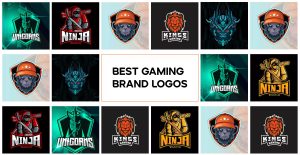How Women Entrepreneurs Build Impactful Logos Through Storytelling
Logos are more than simple visual symbols; they reflect a brand’s identity, values, and long-term vision in meaningful ways. Women entrepreneurs recognize that a logo alone cannot fully communicate the story behind their businesses or the experiences they provide. By combining thoughtful design with compelling narratives, they create stronger recognition and lasting impressions with their audiences.
The rise of women in entrepreneurship highlights how their unique perspectives shape modern branding. According to Talker Research, 80% of those surveyed expect more women to take leadership roles over the next ten years. In the past six years, 58% of current female business owners launched their ventures. Also, 89% of aspiring women entrepreneurs plan to start their own businesses within the next five years.
These numbers reflect a dynamic shift in business ownership and emphasize the growing influence of women-led enterprises. By pairing logos with meaningful storytelling, women entrepreneurs turn visual symbols into authentic and memorable experiences that resonate deeply with audiences.
This blog post aims to explore how storytelling enhances logos for women entrepreneurs and why this approach proves so effective.
How Stories Enhance Logo Recognition
A logo often serves as the first impression of a brand, representing its identity, values, and vision. However, a visual symbol alone cannot fully capture a brand’s story or create lasting recall with audiences. Women entrepreneurs recognize that combining logos with meaningful narratives strengthens recognition by connecting emotionally.
Logos gain significance when they reflect a business’s journey, purpose, and experiences. The stories behind a logo provide context, helping audiences understand the brand’s philosophy. By embedding narratives into visual design, entrepreneurs transform logos from simple symbols into representations of authenticity and innovation.
An analysis of 217 logo-related articles over the past 40 years highlights the evolving impact of logos on recognition. Early research focused primarily on basic visual identification of logos. Over time, studies examined their perceptual, conceptual, and contextual properties, including interactions with other brand elements.
Findings in ScienceDirect indicate that logos combined with compelling stories achieve stronger emotional attachment and better alignment with brand identity. Advanced methods, including neuromarketing and psychological assessments, reveal that narrative-backed logos significantly enhance consumer loyalty.
Impact of Personal Choices on Creativity
Personal decisions often shape how entrepreneurs approach their businesses, influencing their creativity, innovation, and problem-solving strategies. Choices related to time management, work-life balance, and long-term goals affect how women leaders envision and execute their brand identities. These decisions impact day-to-day operations while guiding strategic thinking and storytelling techniques.
Many women business owners delay starting a family to focus on their ventures, often turning to long-acting contraceptives like Depo-Provera. However, according to TorHoerman Law, prolonged use of Depo-Provera has been linked to many complications. These include an increased risk of brain and spinal cord tumors.
The victims are now exploring legal avenues to hold Pfizer accountable for its alleged negligence. With the assistance of experienced attorneys, affected individuals can complete the Depo-Provera lawsuit sign-up process to join the case. This process allows them to stay informed about litigation developments.
These considerations illustrate how personal choices can carry complex consequences that indirectly influence entrepreneurial creativity and decision-making. Health challenges, family planning decisions, or legal battles can affect how women allocate their time and energy toward business growth. Such circumstances often reshape priorities, impacting both short-term strategies and long-term vision.
Logos as Symbols of Authenticity and Trust
A logo serves as more than just a visual element; it represents a brand’s values, mission, and credibility. When designed thoughtfully, a logo communicates authenticity and builds a meaningful connection between the business and its audience. Customers are more likely to trust brands whose visual identity reflects genuine purpose and consistent messaging over time.
Beyond design style and symbolism, the colors used in a logo play a crucial role in reinforcing trustworthiness and authenticity. The way colors are applied can subtly shape customer perceptions, making the brand feel more aligned with its intended message. Understanding how color interacts with background and overall design context is essential for ensuring that a logo conveys honesty.
According to Harvard Business Review, logo colors strongly influence customer perceptions, emotional reactions, and overall brand recall. White backgrounds generally create more positive impressions, while black backgrounds often evoke negative associations, especially with abstract logos.
Logos with clear, representative concepts stay mostly consistent, and those within filled frames preserve their color perception across backgrounds. These insights suggest that brands must carefully plan color use to maintain visual consistency and convey authenticity effectively.
Drive Growth Through Narrative-Backed Logos
A logo is more than a visual identifier; it can act as a strategic tool to drive business growth. When combined with compelling narratives, logos help brands communicate values, missions, and unique stories that resonate with audiences. Narrative-backed logos create emotional connections, encouraging customers to engage, remember, and ultimately support the brand over time.
In today’s competitive market, consumers are constantly exposed to countless brands and logos, making differentiation critical. A visually appealing logo alone may capture attention briefly, but a logo tied to a meaningful story can influence purchase decisions. By integrating narrative elements into logo design, businesses can reinforce brand personality, inspire loyalty, and enhance overall market recognition.
Statista reports that about one in three U.S. adults purchased a product specifically because its logo captured their interest. This demonstrates that a well-crafted logo, supported by storytelling, can directly influence consumer behavior and contribute to sales growth. Logos paired with meaningful stories can boost customer loyalty, enhance brand awareness, and contribute directly to business growth.
FAQs
1. How does storytelling support logo design?
Storytelling supports logo design by giving visuals context and depth. Customers connect when they know the story. This transforms a logo into a meaningful identity. Women entrepreneurs use storytelling to ensure logos communicate values clearly. Stories make designs more impactful and memorable.
2. How does storytelling improve logo recognition?
Storytelling links logos to memorable experiences, allowing customers to associate visuals with meaningful narratives. This connection enhances recall, transforms a simple symbol into an engaging experience, and strengthens retention. Women entrepreneurs leverage storytelling to make logos more recognizable and emotionally resonant with their audience.
3. Can storytelling help logos build trust?
Yes, storytelling enhances a logo’s credibility by conveying authentic experiences and real brand values. Narratives highlight honesty, responsibility, and transparency, fostering stronger customer engagement. Women entrepreneurs use storytelling to ensure their logos reflect genuine journeys, which builds trust and encourages long-term loyalty among audiences.
Logos alone cannot create long-term recognition. They need stories to give them meaning. Women entrepreneurs combine storytelling with design to strengthen logos. Stories highlight authenticity and responsibility. This approach builds loyalty and recognition. Logos supported by narratives become more than symbols. They become experiences. Through storytelling, women entrepreneurs create logos that inspire growth.




